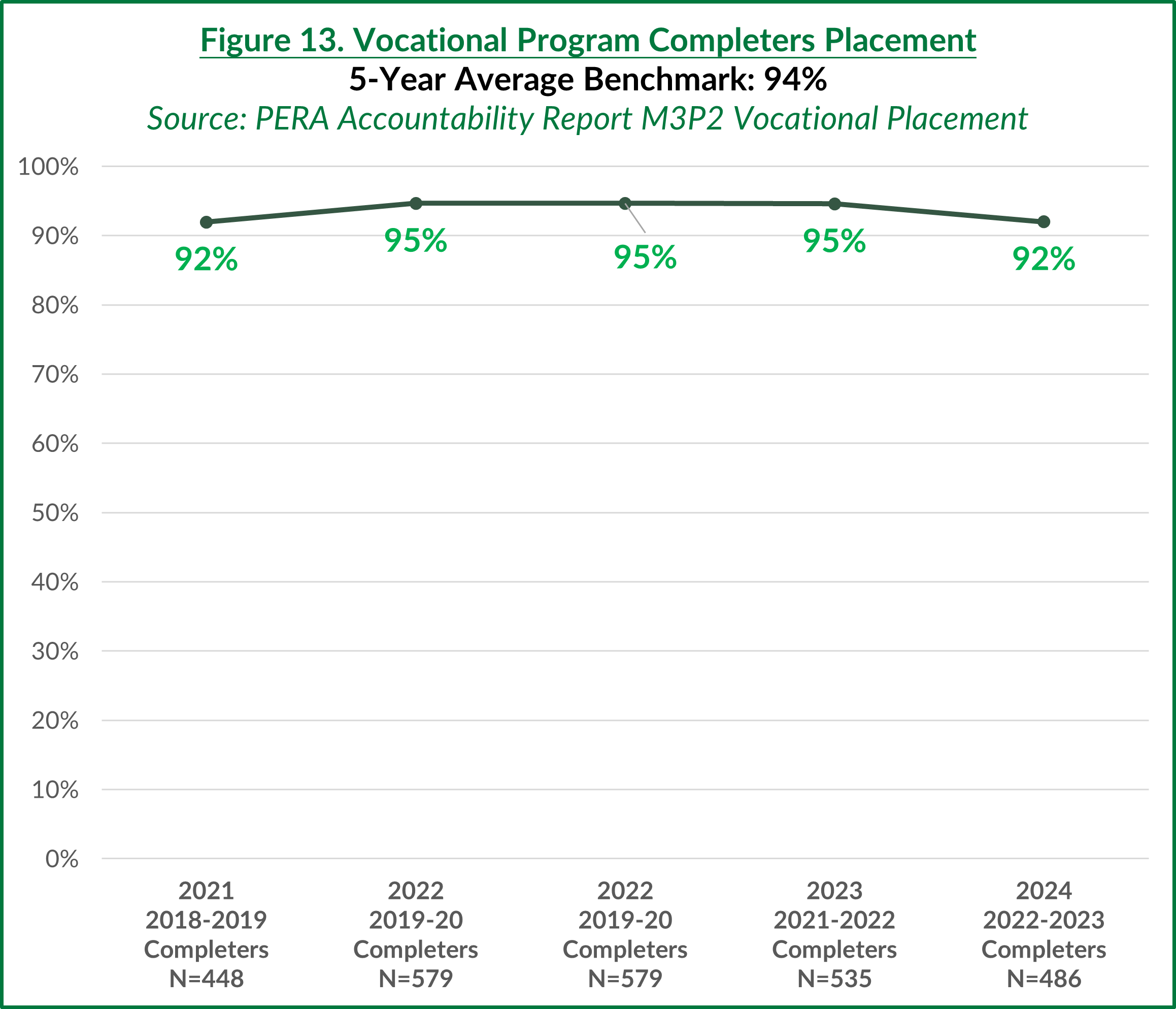Student Achievement Metrics
Student Achievement Metrics
Florida Gateway College strives to ensure positive outcomes for its students and graduates. To this end, the College tracks several student achievement metrics to determine if students are retained by the College, if they graduate from the College, and how well their education serves them as they seek employment or continuing education. By monitoring these metrics, the College can make timely and appropriate interventions to ensure positive outcomes for its students.
About the Metrics
Each dataset has a benchmark.
5-Year Average Benchmark: This benchmark consists of the College’s average percentage of performance in the target area over a span of five years (currently including: 2020, 2021, 2022, 2023, and 2024). Florida Gateway College’s aim is to remain near or above the benchmark percentage for each target area, with a +/-5% tolerance to account for changes in college programs, state policies, economic changes, etc. If the metric falls outside of the acceptable range, Florida Gateway College leaders take action to investigate reasoning for the shift and make college-wide or programmatic changes accordingly to either correct (if negative) or continue (if positive) trends. (Note: benchmark percentages are rounded to the nearest whole number.)
(N) Sample Sizes
For each metric, sample sizes are listed when available next to each reporting year. The sample size is the number of students counted in the cohort, represented by the letter “N”. Please note that small sample sizes may cause misleading interpretations of the data.
Dual Enrollment
Dual enrollment students are not counted in the graduation and retention rate metrics presented. Dual enrollment students who graduate from high school and then matriculate at FGC are considered First Time In College (FTIC) students and are included in reporting from this point forward. PSVC metrics include CCC and ATD programs.
Graduation Rates
Graduation rates are an important student success metric, as students who graduate with a degree or certificate can access the benefits of an educational credential, such as improved job prospects, more fulfilling work, and a stable income. Florida Gateway College uses two data sources for graduation rates:
- Integrated Postsecondary Education Data System (IPEDS) Reports, which include the College’s overall graduation rate. Applicable to Figures 1-3
- Florida College System (FCS) Accountability Reports (M1P2, “Measure 1, Part 2”), which include the College’s graduation rate by program type. Applicable to Figures 4-7
The traditional IPEDS graduation rate is calculated based on the number of FTIC (First Time in College) students attending the College full-time who graduate within 150% of normal degree completion time.
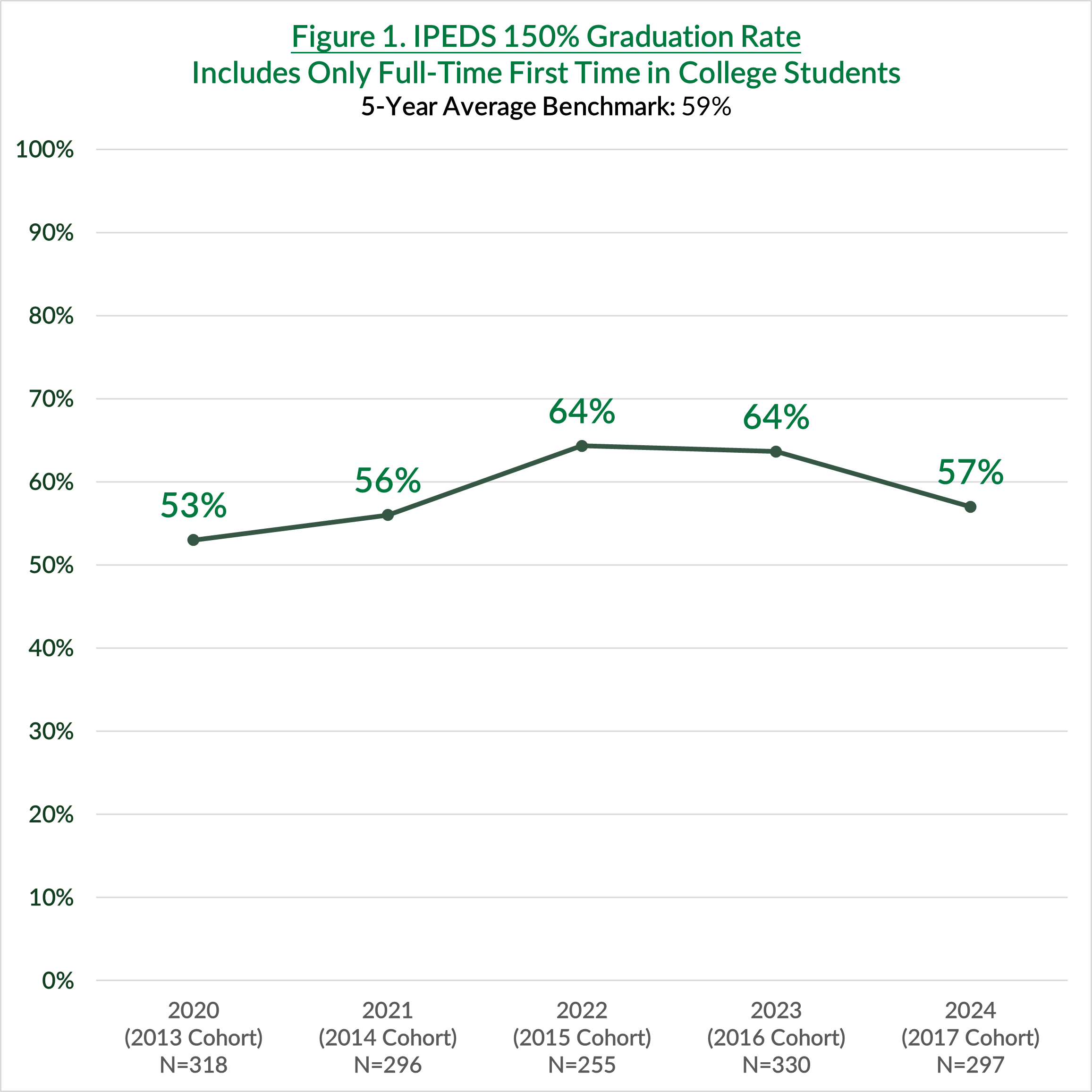
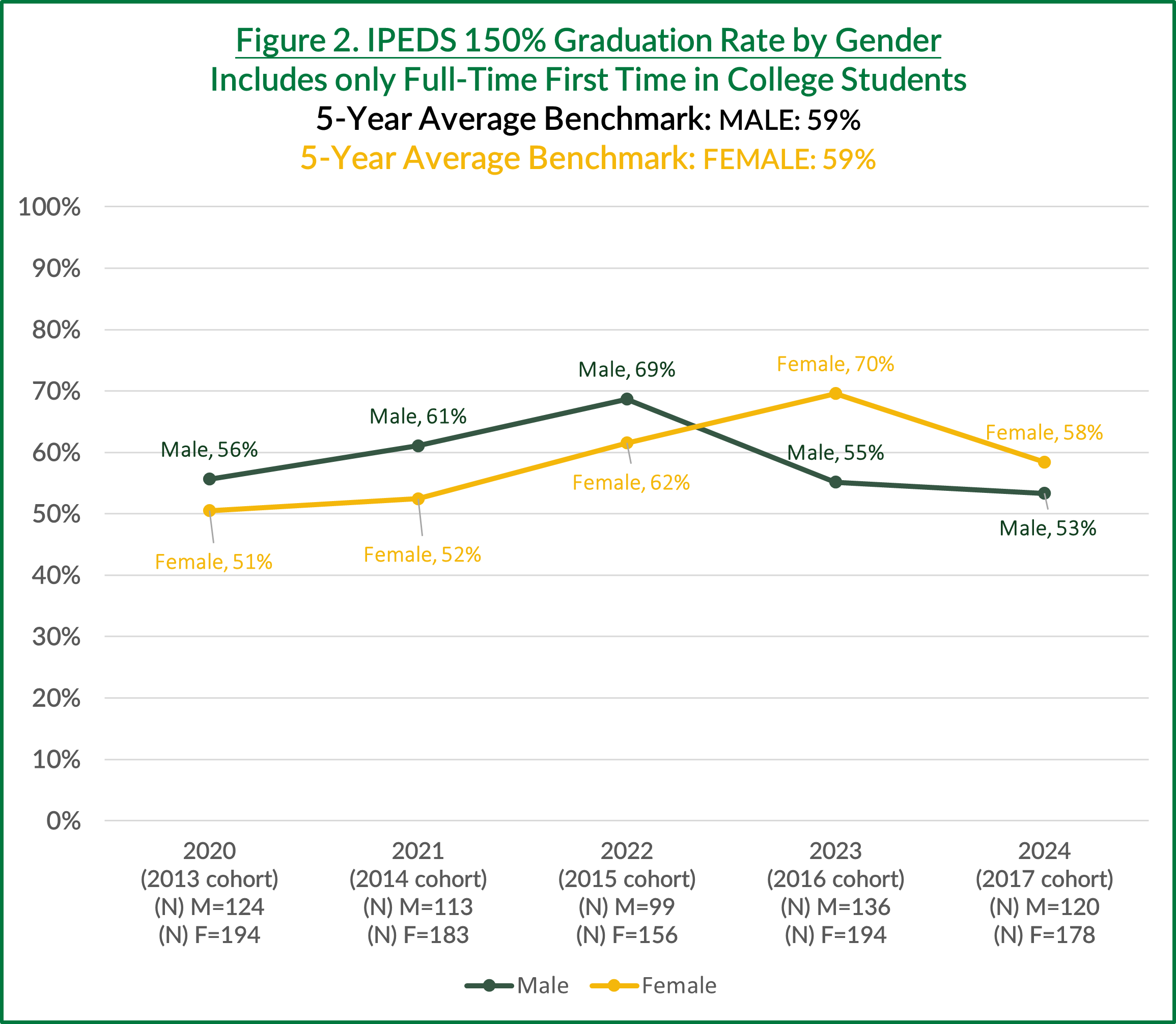 |
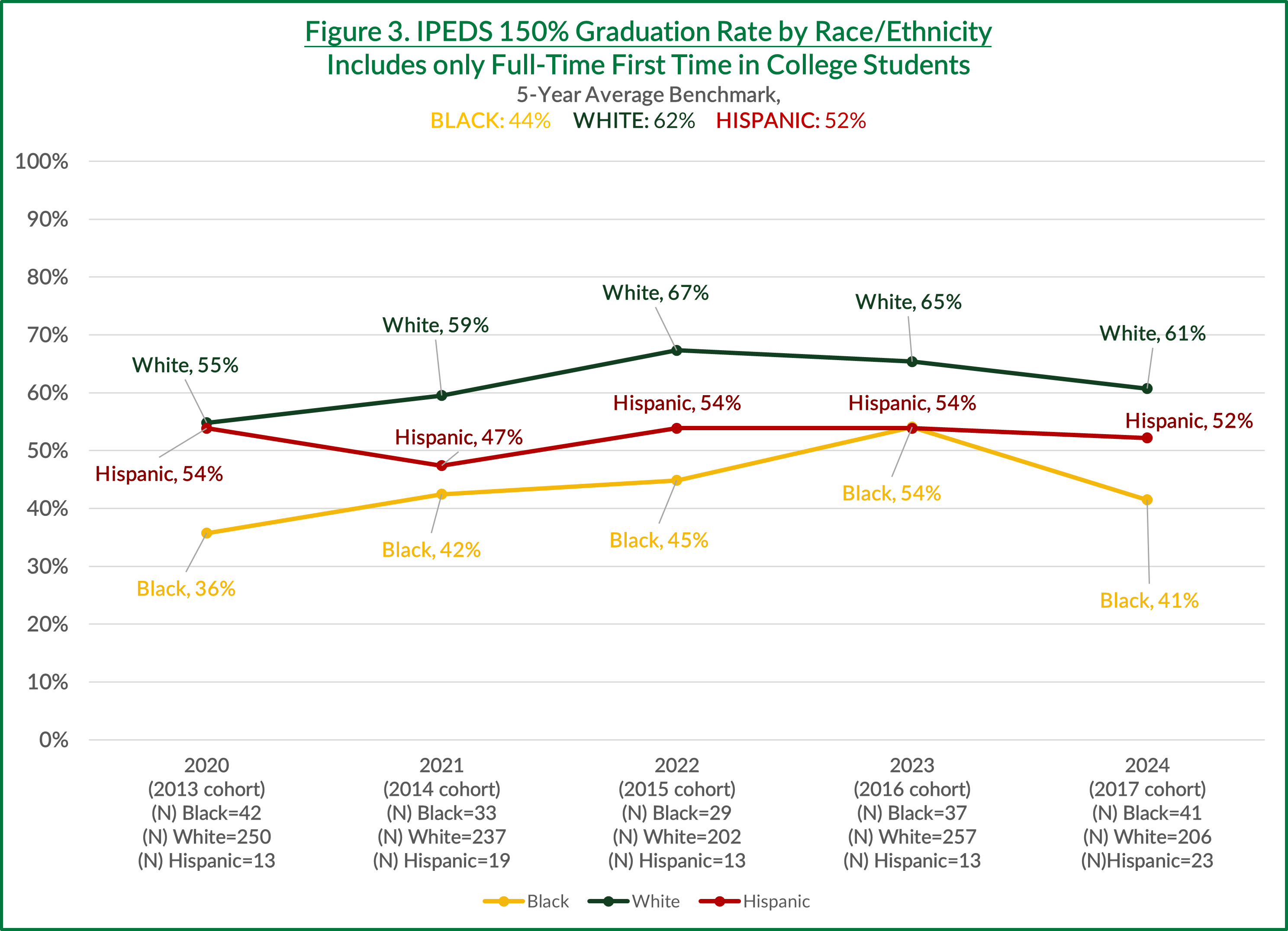 |
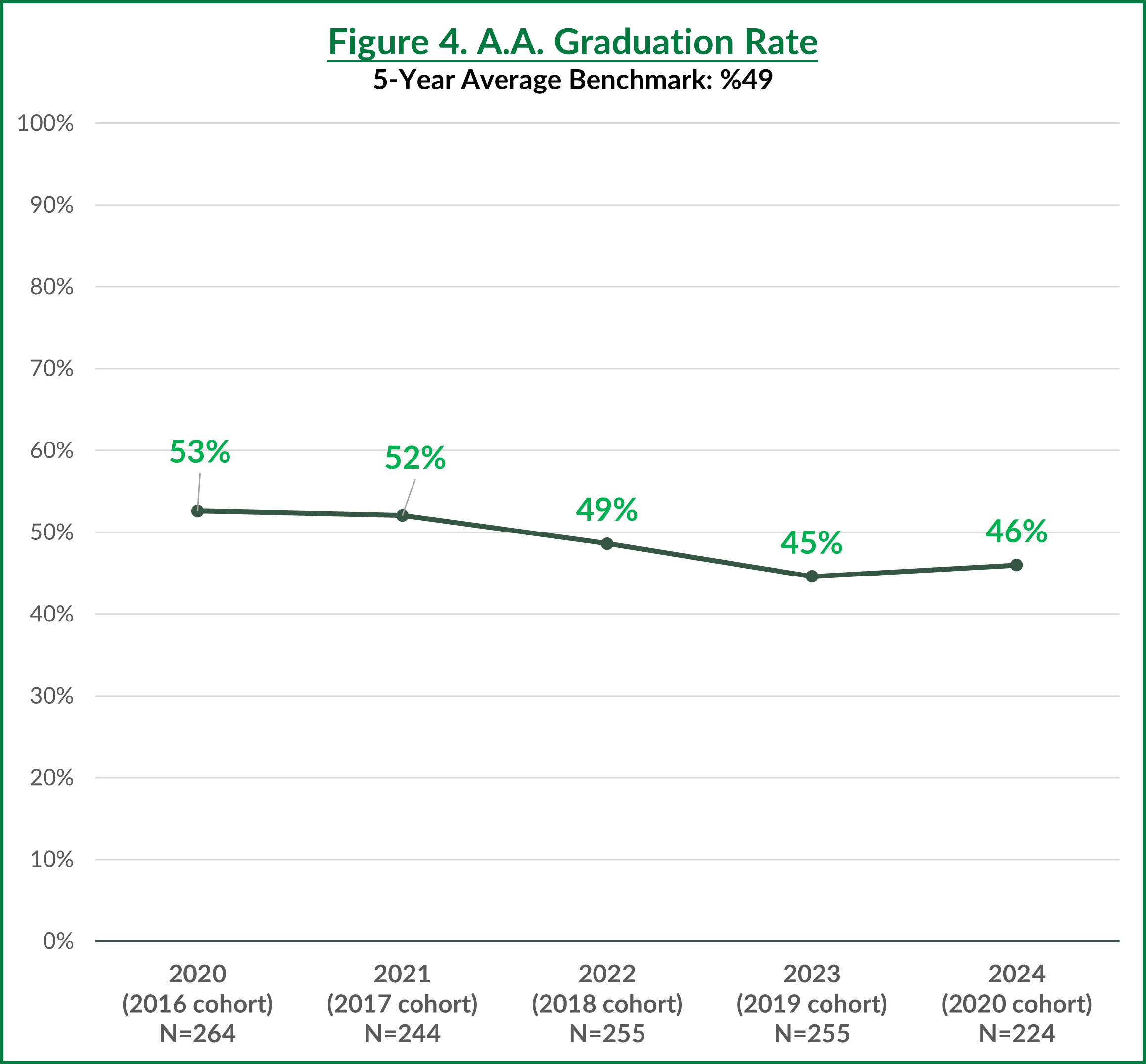 |
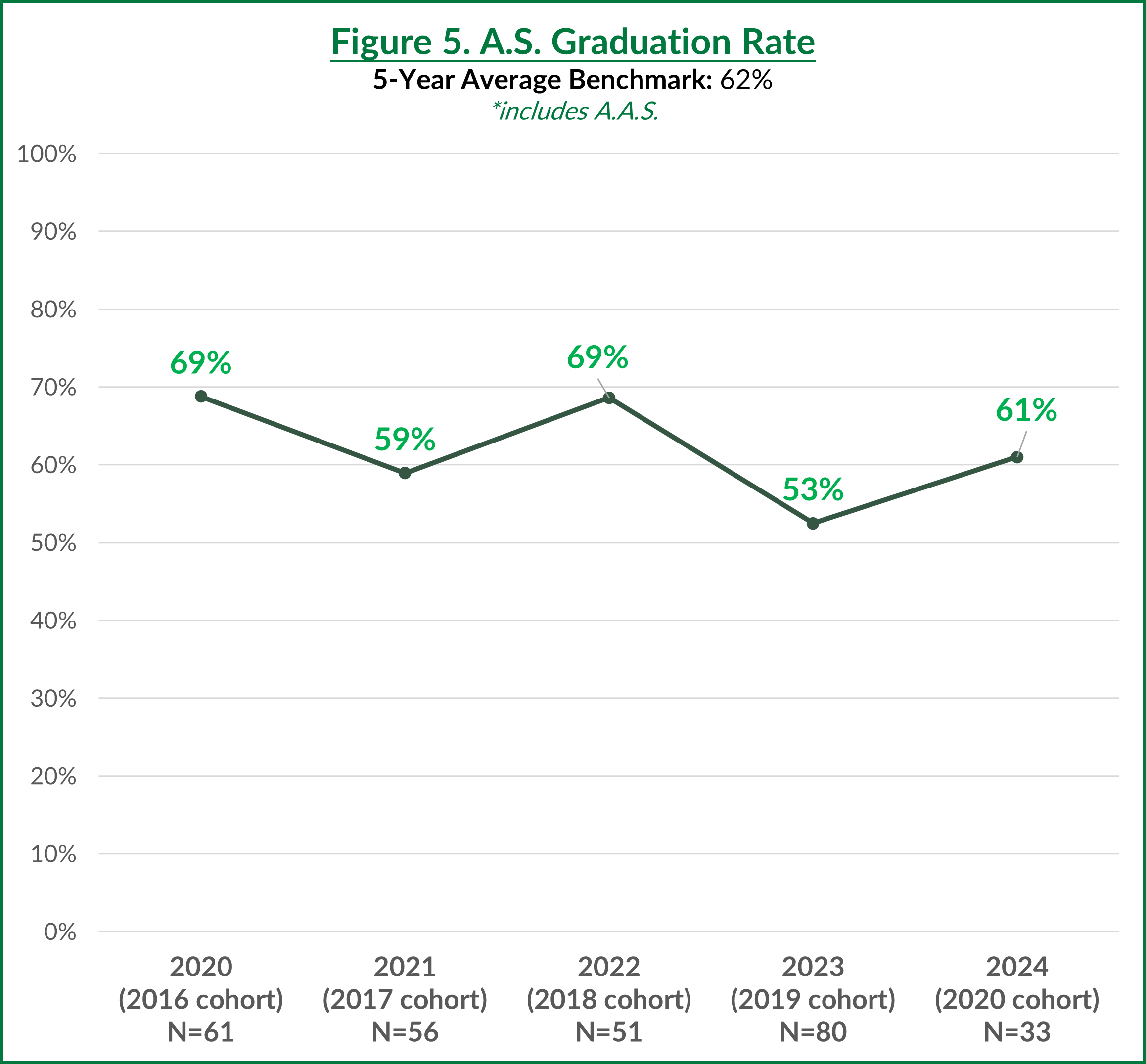 |
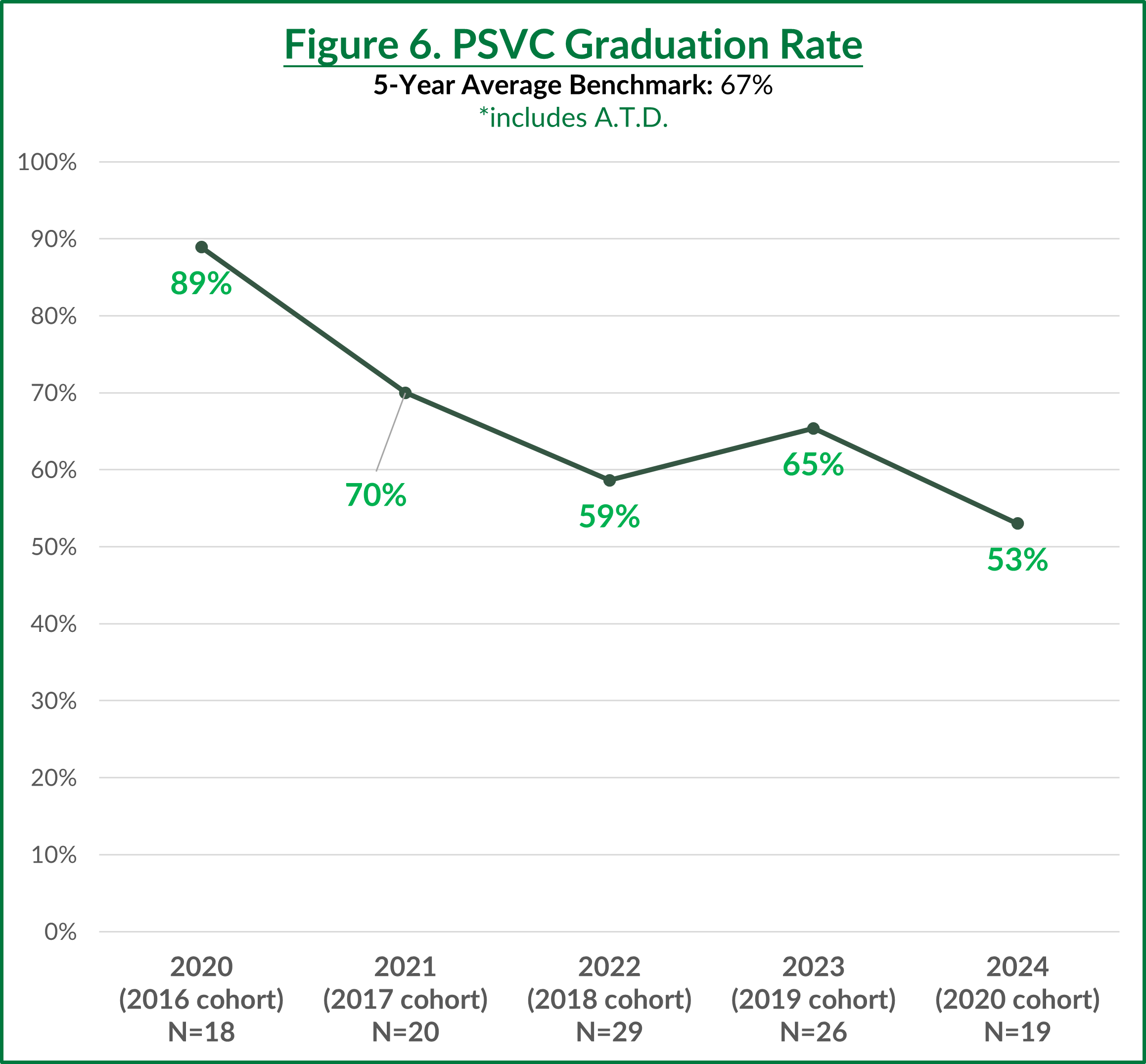 |
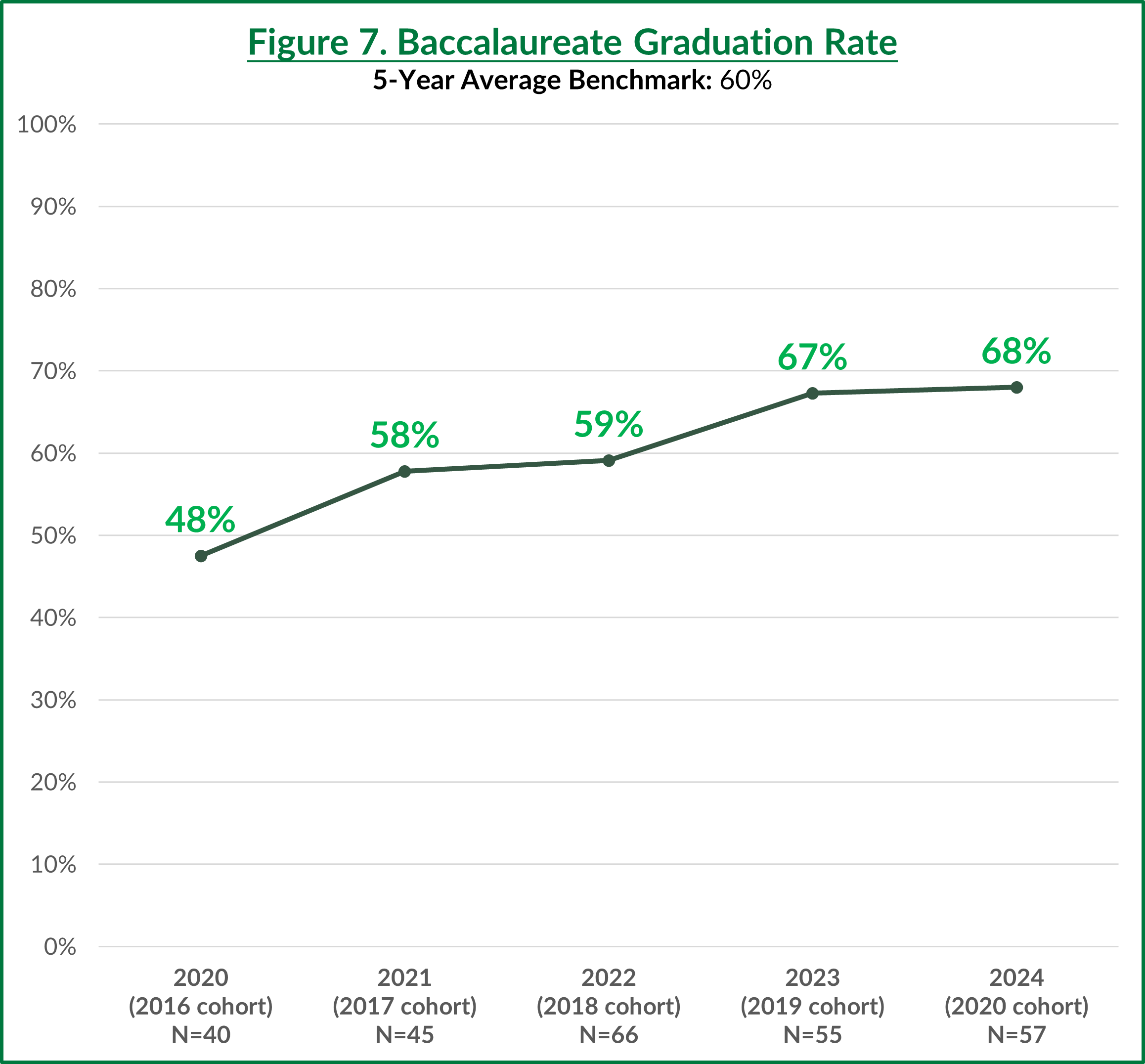 |
Retention Rates
Florida Gateway College recognizes the importance of student retention, as retention is the first step towards graduation from the College. If a student is retained, this indicates that the College is meeting the needs of that student. The Florida College System considers students in a cohort to be retained if they enrolled in two consecutive fall terms. Retention calculations include both part-time and full-time, FTIC (First Time in College) students.
SOURCE: Florida College System (FCS) Accountability Reports (M1P2, “Measure 1, Part 2”), which includes the College’s retention rate by program type. Applicable to Figures 8-11
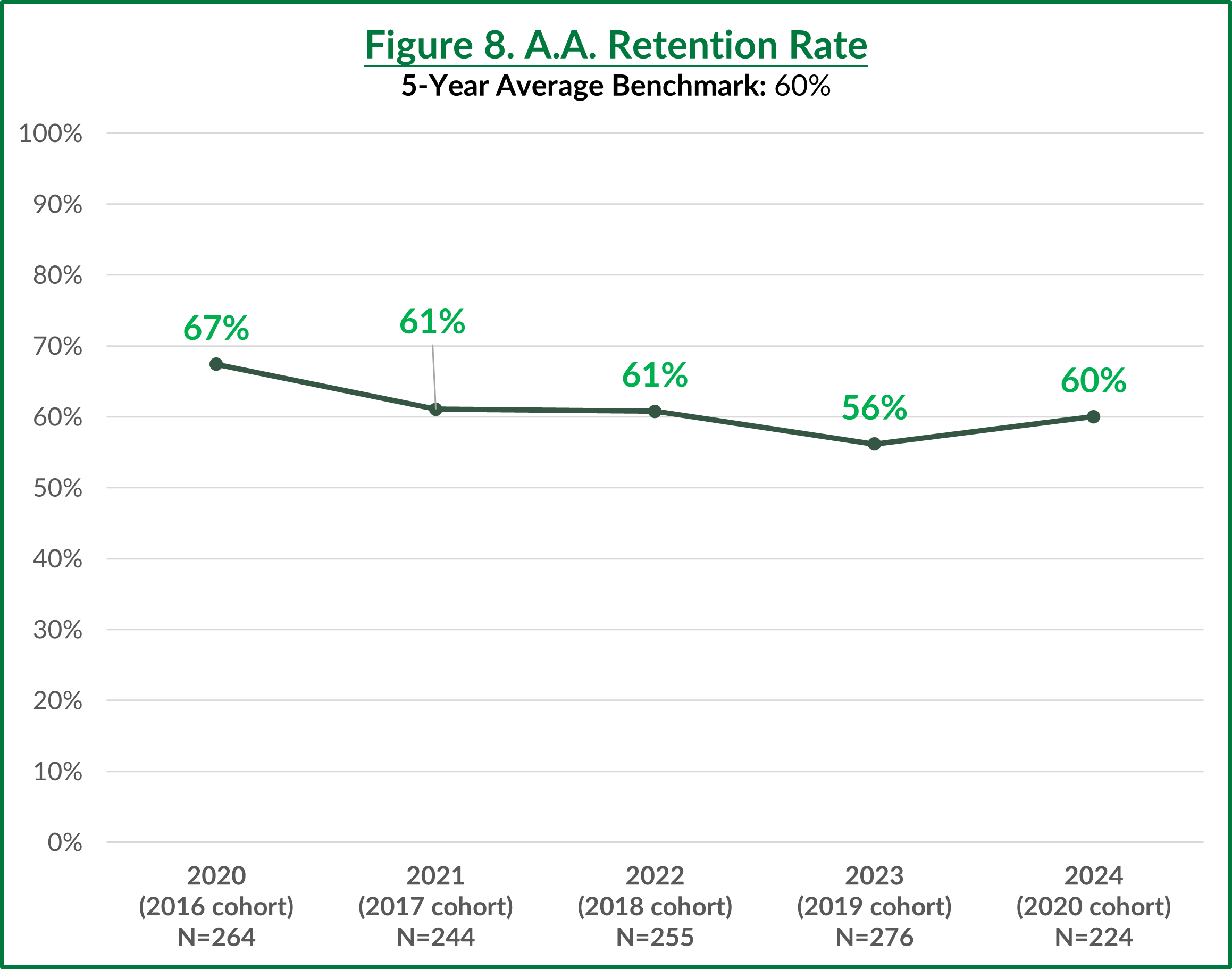 |
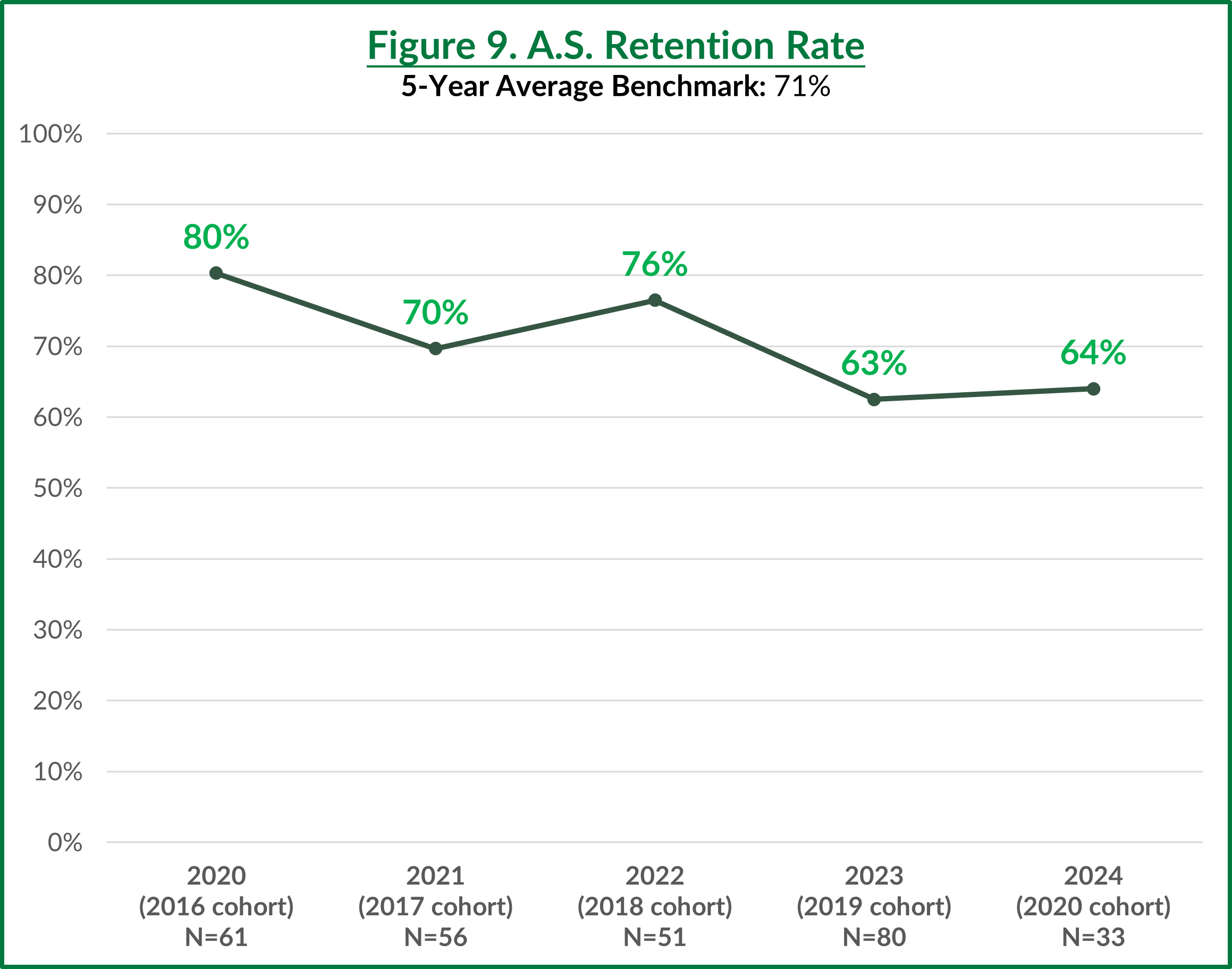 |
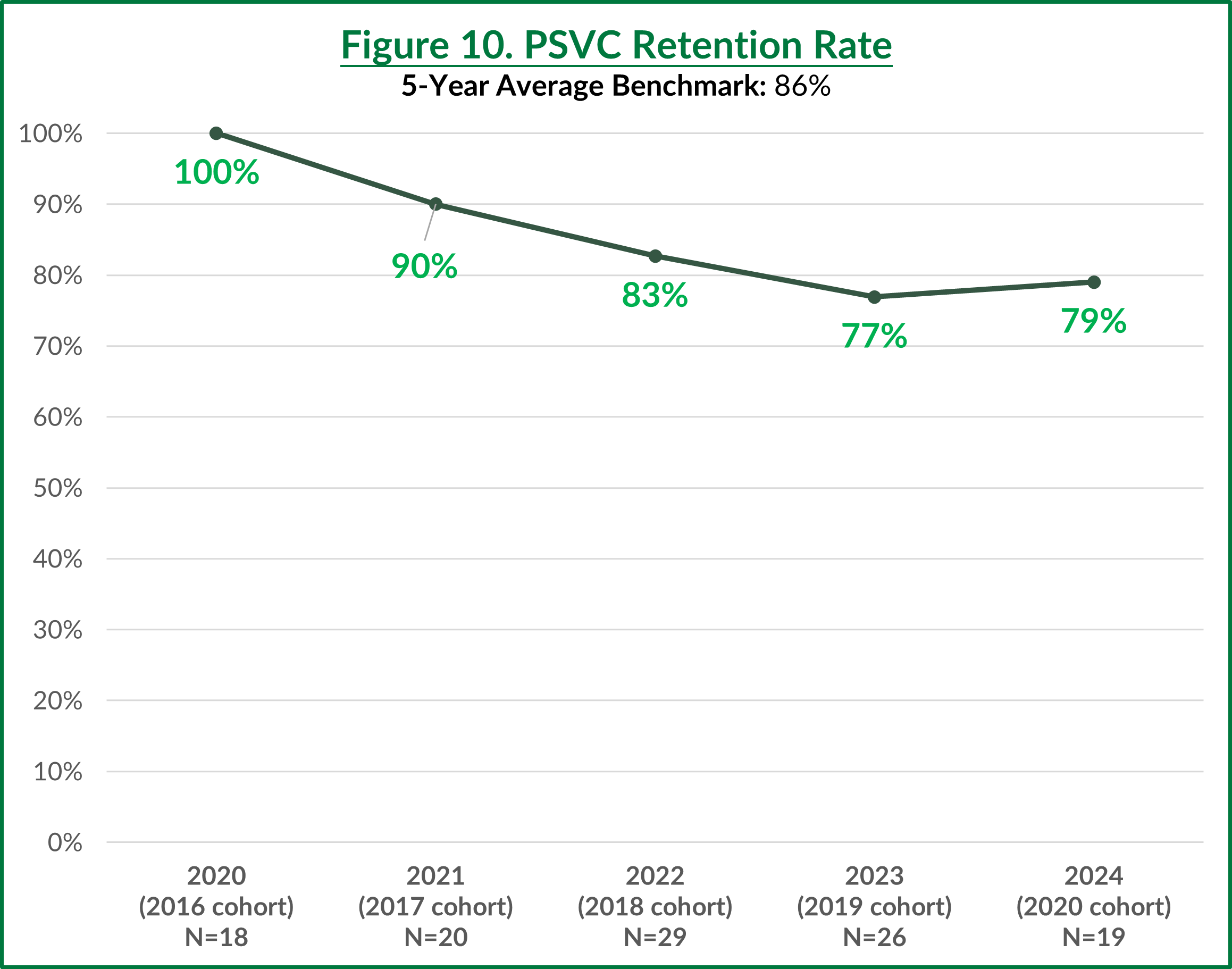 |
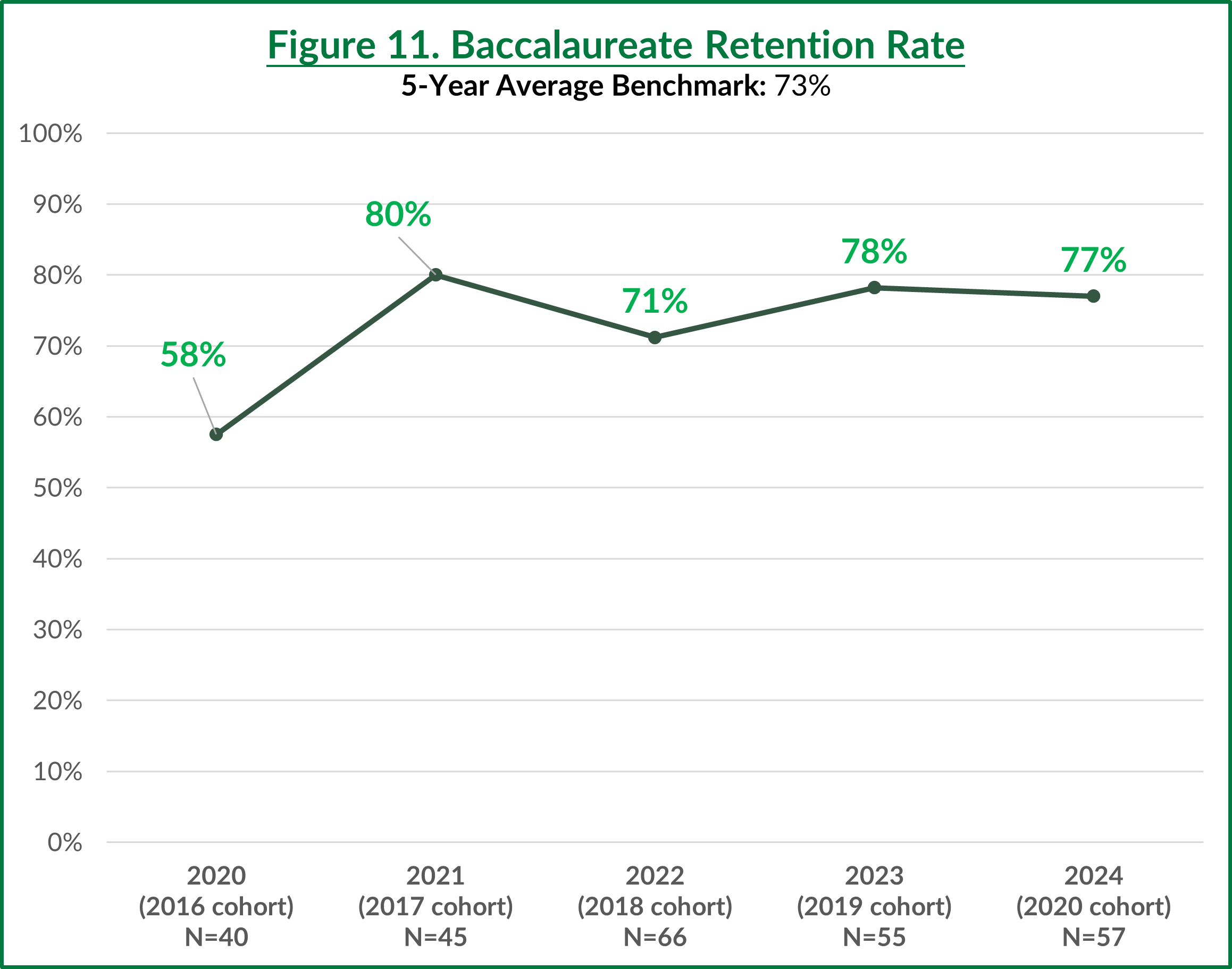 |
Associate of Arts Continuing Education Rates
The Associate in Arts (A.A.) degree is designed for students who wish to further their education either to a four-year institution or a program that generally requires education beyond high school for admittance. The percentage of A.A. students who continue education after graduation is an indicator of how well the College’s A.A. program is meeting the needs of these students.
SOURCE: Florida College System (FCS) FETPIP (Florida Education & Training Placement Information Program) A.A. Outcomes by School report 2022-2023, which includes the College’s A.A. Degree Completer Continuing Education rates. Applicable to Figure 12
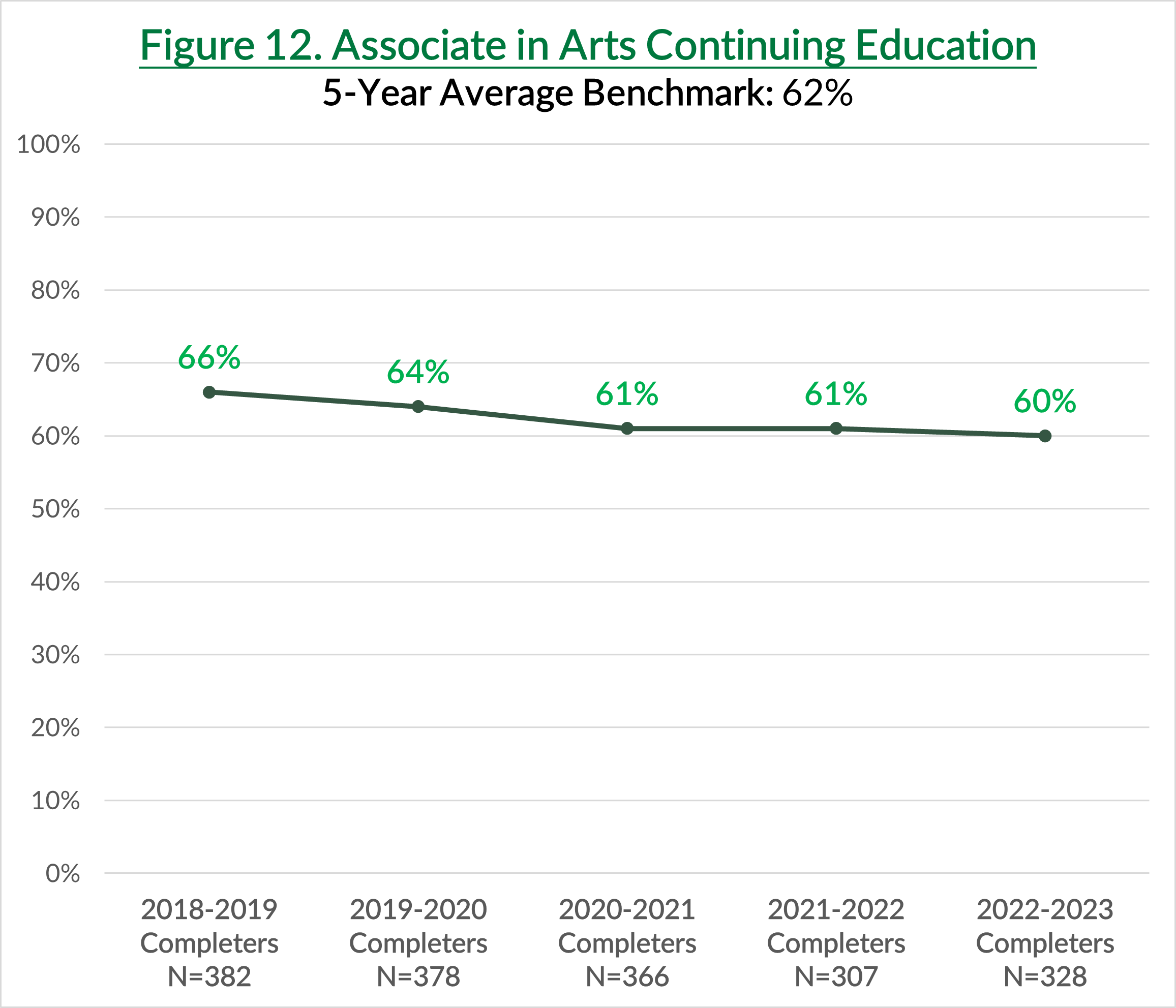
Placement Rates
Vocational program placement rates are an important student achievement indicator. Many students enroll in higher education programs to improve their job prospects and career mobility. High placement rates demonstrate that Florida Gateway College’s programs are adequately preparing students to enter the workforce or continue their education. Vocational placement is defined by the Florida College System as being employed, being enrolled in an educational program, or being in military service.
Placement rates include all students who completed a workforce program (AS, AAS, CCC, ATD, OC) within the time period examined. The College recognizes that its placement rate is consistently high (above 90%) but is committed to improvement.
SOURCE: Florida College System (FCS) Accountability Report (M3P2, “Measure 3, Part 2”), which include the College’s overall completer placement rate. Applicable to Figure 13
